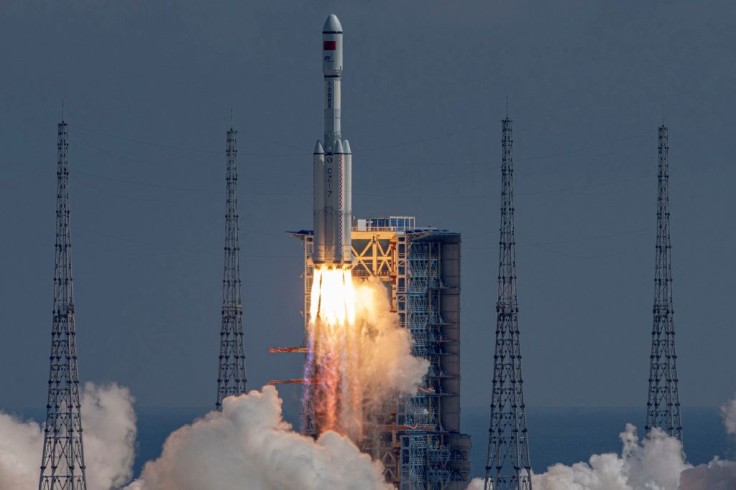China conducted its last space launch of 2022 on Thursday, December 29. With this, the Philippine Space Agency (PhilSa) issued a warning of falling debris from the Chinese rocket launch, Space.com reported.
A Chinese Long March 3B rocket carrying the Shiyan-10 02 satellite was launched from the Xichang Satellite Launch Center. It will be used for in-orbit verification of new space technologies, including space environment monitoring.

Unburned Rocket Debris Are Expected to Fall Within the Drop Zone Area
After China's launch of the Long March 3B rocket, PhilSa recommended to the public that precautionary measures should be exercised as rocket debris is expected to fall between 12:33 p.m. and 1:10 p.m. near Palawan, according to local media, The Philippine Star.
According to an advisory issued on Tuesday morning, PhilSa stated that unburned debris such as rocket boosters and payload firing was expected to fall within a drop zone area located within the vicinity of Recto bank.
The projected location where the debris will fall is approximately 137 kilometers from Ayungin Shoal and 200 kilometers from Quezon, Palawan.
With this, officials of the agency issued an advisory to all relevant government agencies on the estimated drop zone area.
They also proposed the issuance of appropriate warnings on air and marine access within the estimated drop zone area.
According to a statement by PhilSa, the rocket launch's leftovers were not projected to fall on land features or inhabited areas within the Philippine territory.
However, the agency reminded the public that the falling debris poses danger and potential risk to aircraft, ships, fishing boats, and other vessels that will pass through the drop zone area.
While the agency already predicted where the debris may fall, it still issued a warning that the actual drop zone area could still change due to several factors.
Climate conditions, weather, and Earth's rotation could possibly affect the location where the debris will fall.
The agency also reminded the people that debris may float around waters and get washed toward nearby coasts.
Read Also: China's Historic Methane-Fueled Orbital Rocket Launch Fails
PhilSa Reminds the Public to Take Necessary Precautions
PhilSa stated that at this time, "an uncontrolled re-entry to the atmosphere of the rocket's upper stages returning from outer space cannot be ruled out." With this, the agency reiterated that the public must take necessary precautions.
In its earlier public advisory, the agency told the public to immediately inform local authorities if suspected debris is sighted.
Likewise, PhilSa cautioned the public against retrieving or coming in close contact with spotted debris. According to the agency, these materials may contain toxic substances such as rocket fuel.
The presence of rocket debris in the West Philippine Sea has been a recent source of conflict between the Philippines and China.
Earlier this month, the Marcos administration filed a protest against Beijing over the Chinese Coast Guard's forceful seizure of such material from the Philippine navy.
The launch of China's Long March 3B on Thursday was the country's second launch this week.
On Tuesday, December 27, China launched Gaofen-11 04 satellite from the Taiyuan Satellite Launch Center.
Gaofen-11 04 is an Earth-observation satellite, which is made for "land resources surveying, urban planning, road network design, crop yield estimation, and disaster relief."
Related Article: Debris From China's Long March-5B Rocket Reportedly Fell in the Philippines









